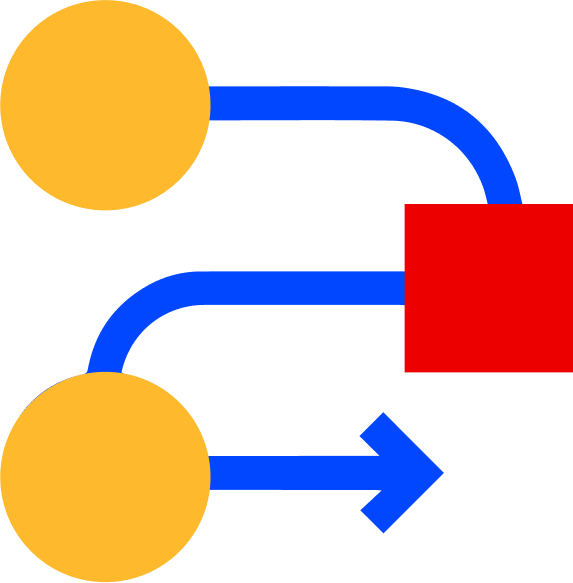Preserving Critical Data in EMEA: Best Practices and Collaboration Platforms Under GDPR


In the EMEA region, businesses can ensure GDPR-compliance for their digital communications by enforcing robust email data protection, securing chat platform security, and governing collaboration tool data via systematic retention and legal hold processes.
By adopting rigorous GDPR compliance strategies, including structured download Gmail information protocols, documented slack exports or Slack eDiscovery workflows, and firm legal hold process guidelines, organizations reduce risk and protect critical communication assets.
Are your teams overlooking how easily personal data flows across email, chat and collaborative platforms? Today we're taking a closer look into how EMEA-based organizations can safeguard email, chat and collaboration channels by implementing best practices around export control, retention governance and secure access.
What Are the Rules for Emails Under GDPR?
Email is one of the most common ways businesses share and store personal data. Under GDPR, every email that contains personal or sensitive information must be handled with care. Organizations must understand how email data protection applies to their daily communication practices.
There are three key rules that guide this process:
- Lawful basis for processing
- Data retention and deletion policies
- Transparency and access rights
Lawful Basis for Processing
Every organization in EMEA must have a clear reason to collect or store personal data in emails. The most common legal bases are consent, contract, or legitimate interest. Businesses must document why they keep specific messages and ensure those reasons align with GDPR requirements.
Data Retention and Deletion Policies
Emails shouldn't be stored forever. Each company should have a policy that defines how long data is kept before deletion. Using structured processes like "download Gmail information" audits helps teams review stored content and remove data that's no longer needed.
Transparency and Access Rights
Individuals have the right to know how their data is used and can request copies or removal. Following clear GDPR compliance strategies builds trust and reduces the risk of regulatory action. Consistent email data protection supports both compliance and customer confidence.
Is Sharing Emails a Breach of GDPR?
Sharing emails may seem harmless, but it can easily lead to a GDPR violation if personal information is involved. Many EMEA businesses rely on email for internal updates, customer communication, and document sharing.
Each of these situations can expose personal data if the wrong people gain access. To stay compliant, organizations need to manage how they share, forward, and store email content.
There are three main ways to reduce the risk of a GDPR breach:
- Limit access and sharing permissions
- Train staff on data handling
- Use secure systems and audits
Limit Access and Sharing Permissions
Emails that contain personal or sensitive data should only be accessible to authorized users. Businesses should use systems that track who can view or share emails. Access should match the person's role and responsibility, reducing the chance of accidental exposure.
Train Staff on Data Handling
People often cause data breaches without realizing it. Teams need regular guidance on spotting sensitive data and understanding when sharing is appropriate. Clear training supports a culture of accountability and helps reduce mistakes that could lead to GDPR penalties.
Use Secure Systems and Audits
Compliance tools, such as email tracking and encrypted storage, protect data during transmission and storage. Periodic audits and reviews of GDPR compliance strategies identify risks early. Applying consistent email data protection and data privacy practices helps companies avoid violations and build customer confidence.
Safeguarding Chat Platform Security in EMEA
Access to chat data should be based on job function, not convenience. Administrators must control who can read or export messages, limiting unnecessary exposure.
Encryption adds another layer of safety by protecting data during storage and transfer. These steps reduce the chance of unauthorized access and data leaks.
Use Compliant Discovery and Export Tools
Many teams rely on platforms like Slack or Microsoft Teams to share sensitive data. Using tools such as Slack eDiscovery and Slack exports allows companies to retrieve message data for compliance checks or legal reviews.
These tools support the GDPR requirement to locate and share data when individuals request it, while still protecting personal details from unnecessary disclosure.
Monitor Retention and Deletion Policies
Every organization should review how long chat data is stored. Old messages that no longer serve a legal or business purpose should be deleted. Automated deletion schedules and regular audits can help maintain compliance.
Strengthening Collaboration Tool Data Protection
Access should always match a person's responsibility. Restricting file sharing and editing rights reduces the risk of leaks or unauthorized exposure.
Role-based permissions help organizations manage collaboration tool data responsibly. These permissions should be reviewed regularly as teams and projects change.
Secure Files and Records With Encryption and Tracking
Encryption protects data as it moves between users and storage systems. Audit trails make it easier to trace who viewed, changed, or downloaded specific files.
It helps organizations demonstrate accountability under GDPR compliance strategies. Combined, these features create a clear record that supports both privacy and operational integrity.
Frequently Asked Questions
How Can Companies Audit Their Communication Tools for GDPR Compliance?
Regular audits help identify gaps in data protection. Companies should start by reviewing where personal data is stored and who can access it. Tools that track activity across email, chat, and collaboration systems make this process easier.
Third-party audits can also confirm whether the company's GDPR compliance strategies meet regional standards. Keeping updated records of processing activities supports transparency and accountability.
What Should Organizations Know About Cross-Border Data Transfers in EMEA?
Transferring personal data outside the EMEA requires special safeguards. Businesses should rely on approved mechanisms such as Standard Contractual Clauses or adequacy decisions from the European Commission.
Encrypting transferred data adds another layer of protection. Every transfer should be documented, showing that the company considered both legal and technical risks.
EMEA Data Privacy Practices
By protecting email data, chat records, and collaboration tool data, organizations in EMEA can meet GDPR requirements while keeping communication secure.
At Onna, we help organizations turn unstructured enterprise data into accessible, secure, and valuable information. Our Data Management Platform centralizes data from cloud-based workplace tools, giving you control, visibility, and scalability. With advanced search, smart processing, and secure collaboration features, we simplify compliance, reduce legal costs, and connect your data responsibly across EMEA and beyond.
Get in touch today to find out how we can help with your data governance.
 eDiscovery
eDiscovery Collections
Collections Processing
Processing Early Case Assessment
Early Case Assessment Information Governance
Information Governance Data Migration
Data Migration Data Archiving
Data Archiving Platform Services
Platform Services Connectors
Connectors Platform API
Platform API Pricing Plans
Pricing Plans Professional Services
Professional Services Technical Support
Technical Support Partnerships
Partnerships About us
About us Careers
Careers Newsroom
Newsroom Reveal
Reveal Logikcull by Reveal
Logikcull by Reveal Events
Events Webinars
Webinars OnnAcademy
OnnAcademy Blog
Blog Content Library
Content Library Trust Center
Trust Center Developer Hub
Developer Hub